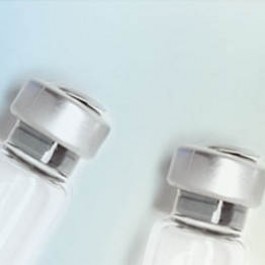Rc3h1 Mouse siRNA Oligo Duplex (Locus ID 381305)
CAT#: SR422163
Rc3h1 (Mouse) - 3 unique 27mer siRNA duplexes - 2 nmol each
Need single siRNA in bulk?
Get a free quote
CNY 4090.00
货期*
7周
规格
Product images

推荐一起购买 (2)
Specifications
| Product Data | |
| Purity | HPLC purified |
| Quality Control | Tested by ESI-MS |
| Sequences | Available with shipment |
| Stability | One year from date of shipment when stored at -20°C. |
| # of transfections | Approximately 330 transfections/2nmol in 24-well plate under optimized conditions (final conc. 10 nM). |
| Note | Single siRNA duplex (10nmol) can be ordered. |
| Reference Data | |
| RefSeq | NM_001024952 |
| Synonyms | 5730557L09Rik; Gm551; mKIAA2025; N28103 |
| Components | Rc3h1 (Mouse) - 3 unique 27mer siRNA duplexes - 2 nmol each (Locus ID 381305)Included - SR30004, Trilencer-27 Universal Scrambled Negative Control siRNA Duplex - 2 nmolIncluded - SR30005, RNAse free siRNA Duplex Resuspension Buffer - 2 ml |
| Summary | Post-transcriptional repressor of mRNAs containing a conserved stem loop motif, called constitutive decay element (CDE), which is often located in the 3' UTR, as in HMGXB3, ICOS, IER3, NFKBID, NFKBIZ, PPP1R10, TNF, TNFRSF4 and in many more mRNAs (PubMed:23663784, PubMed:25026077, PubMed:18172933). Cleaves translationally inactive mRNAs harboring a stem-loop (SL), often located in their 3' UTRs, during the early phase of inflammation in a helicase UPF1-independent manner (PubMed:26000482). Binds to CDE and promotes mRNA deadenylation and degradation. This process does not involve miRNAs (PubMed:20412057, PubMed:20639877). In follicular helper T (Tfh) cells, represses of ICOS and TNFRSF4/Ox40 expression, thus preventing spontaneous Tfh cell differentiation, germinal center B-cell differentiation in the absence of immunization and autoimmunity. In resting or LPS-stimulated macrophages, controls inflammation by suppressing TNF expression. Also recognizes CDE in its own mRNA and in that of paralogous RC3H2, possibly leading to feedback loop regulation (PubMed:23583642, PubMed:23583643, PubMed:15917799). Inhibits cooperatively with ZC3H12A the differentiation of helper T cells Th17 in lungs. They repress target mRNA encoding the Th17 cell-promoting factors IL6, ICOS, REL, IRF4, NFKBID and NFKBIZ. The cooperation requires RNA-binding by RC3H1 and the nuclease activity of ZC3H12A (PubMed:25282160). Recognizes and binds mRNAs containing a hexaloop stem-loop motif, called alternative decay element (ADE) (PubMed:27010430). Able to interact with double-stranded RNA (By similarity). miRNA-binding protein that regulates microRNA homeostasis. Enhances DICER-mediated processing of pre-MIR146a but reduces mature MIR146a levels through an increase of 3' end uridylation. Both inhibits ICOS mRNA expression and they may act together to exert the suppression (PubMed:25697406). Acts as a ubiquitin E3 ligase. Pairs with E2 enzymes UBE2A, UBE2B, UBE2D2, UBE2F, UBE2G1, UBE2G2 and UBE2L3 and produces polyubiquitin chains. Show the strongest activity when paired with UBE2N:UBE2V1 or UBE2N:UBE2V2 E2 complexes and generate both short and long polyubiquitin chains (By similarity).[UniProtKB/Swiss-Prot Function] |
| Performance Guranteed | OriGene guarantees that at least two of the three Dicer-Substrate duplexes in the kit will provide at least 70% or more knockdown of the target mRNA when used at 10 nM concentration by quantitative RT-PCR when the TYE-563 fluorescent transfection control duplex (cat# SR30002) indicates that >90% of the cells have been transfected and the HPRT positive control (cat# SR30003) provides 90% knockdown efficiency. For non-conforming siRNA, requests for replacement product must be made within ninety (90) days from the date of delivery of the siRNA kit. To arrange for a free replacement with newly designed duplexes, please contact Technical Services at techsupport@origene.com. Please provide your data indicating the transfection efficiency and measurement of gene expression knockdown compared to the scrambled siRNA control (quantitative RT-PCR data required). |
Documents
| Product Manuals |
| FAQs |
| SDS |
Customer
Reviews
Loading...


